See also
- Rosseti, a Russian power company
- Rosetti (disambiguation)
- Rosette (disambiguation)
- Rosetti family, a Moldavian princely family
Rossetti may refer to:

Highgate Cemetery is a place of burial in north London, England. There are approximately 170,000 people buried in around 53,000 graves across the West and East Cemeteries. Highgate Cemetery is notable both for some of the people buried there as well as for its de facto status as a nature reserve. The Cemetery is designated Grade I on the Register of Historic Parks and Gardens. It is one of the Magnificent Seven cemeteries in London.

The Pre-Raphaelite Brotherhood was a group of English painters, poets, and art critics, founded in 1848 by William Holman Hunt, John Everett Millais, Dante Gabriel Rossetti, William Michael Rossetti, James Collinson, Frederic George Stephens and Thomas Woolner who formed a seven-member "Brotherhood" modelled in part on the Nazarene movement. The Brotherhood was only ever a loose association and their principles were shared by other artists of the time, including Ford Madox Brown, Arthur Hughes and Marie Spartali Stillman. Later followers of the principles of the Brotherhood included Edward Burne-Jones, William Morris and John William Waterhouse.

Gabriel Charles Dante Rossetti, generally known as Dante Gabriel Rossetti, was an English poet, illustrator, painter, translator and member of the Rossetti family. He founded the Pre-Raphaelite Brotherhood in 1848 with William Holman Hunt and John Everett Millais. Rossetti inspired the next generation of artists and writers, William Morris and Edward Burne-Jones in particular. His work also influenced the European Symbolists and was a major precursor of the Aesthetic movement.

Christina Georgina Rossetti was an English writer of romantic, devotional and children's poems, including "Goblin Market" and "Remember". She also wrote the words of two Christmas carols well known in Britain: "In the Bleak Midwinter", later set by Gustav Holst, Katherine Kennicott Davis, and Harold Darke, and "Love Came Down at Christmas", also set by Darke and other composers. She was a sister of the artist and poet Dante Gabriel Rossetti and features in several of his paintings.
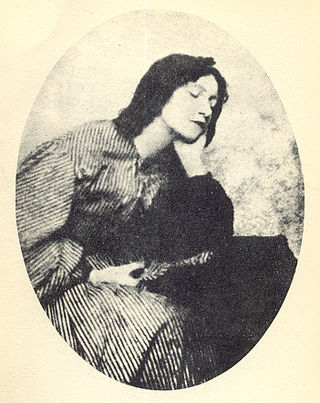
Elizabeth Eleanor Siddall, better known as Elizabeth Siddal, was an English artist, poet, and artists' model. Significant collections of her artworks can be found at Wightwick Manor and the Ashmolean. Siddal was painted and drawn extensively by artists of the Pre-Raphaelite Brotherhood, including Walter Deverell, William Holman Hunt, John Everett Millais, and especially by her husband, Dante Gabriel Rossetti.

Gabriele Pasquale Giuseppe Rossetti was an Italian nobleman, poet, constitutionalist, scholar, and founder of the secret society Carbonari.
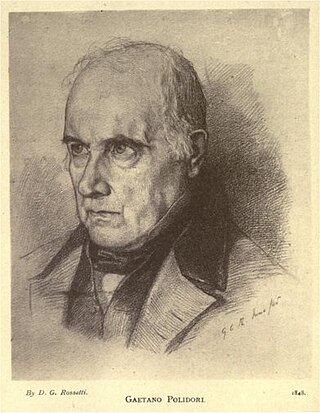
Gaetano Fedele Polidori (1763–1853) was an Italian writer, political and scholar living in Highgate. He was the son of Agostino Ansano Polidori (1714–1778), a physician and poet who lived and practised in his native Bientina, near Pisa, Tuscany.

William Michael Rossetti was an English writer and critic.
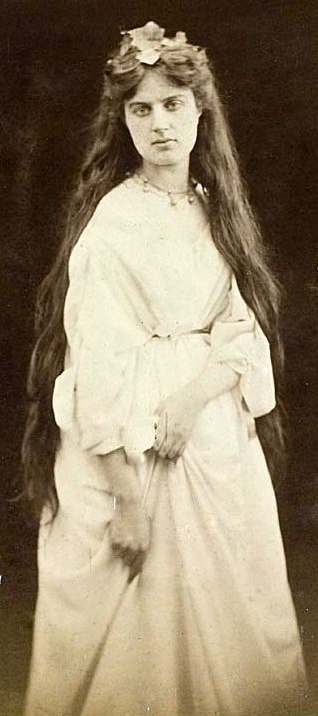
Marie Stillman was a British member of the second generation of the Pre-Raphaelite Brotherhood. Of the Pre-Raphaelites, she had one of the longest-running careers, spanning sixty years and producing over one hundred and fifty works. Though her work with the Brotherhood began as a favorite model, she soon trained and became a respected painter, earning praise from Dante Gabriel Rossetti and others.

Frances Mary Lavinia Polidori, laterRossetti, of London, was a scholar, daughter, wife, sister and mother of important writers and artists; she was the governess of her four children. She was also a model of the paintings of her son Dante. Some photographic portraits of the Rossetti family by Lewis Carroll in the Victorian era are permanently displayed at the National Portrait Gallery, London.

Maria Francesca Rossetti was a London-born English author and nun. She was the sister of artist Dante Gabriel Rossetti and William Michael Rossetti, and of Christina Georgina Rossetti, who dedicated her 1862 poem Goblin Market to Maria.
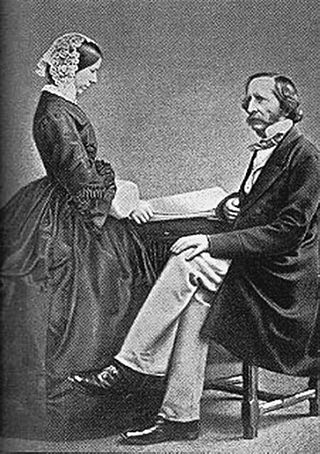
Pauline, Lady Trevelyan was an English painter, noted for single-handedly making Wallington Hall in Northumberland a centre of High Victorian cultural life, and for enchanting by her intellect and art John Ruskin, Swinburne, Elizabeth Barrett Browning, Robert Browning, Christina Rossetti, Dante Gabriel Rossetti, William Michael Rossetti, Thomas Carlyle, John Everett Millais, and other members of the Pre-Raphaelite Brotherhood. She was married in May 1835 to Sir Walter Calverley Trevelyan, 6th Baronet.

Desperate Romantics is a six-part television drama serial about the Pre-Raphaelite Brotherhood, first broadcast on BBC Two between 21 July and 25 August 2009.
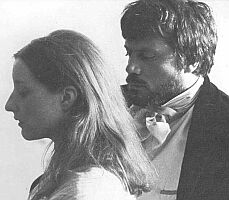
Dante's Inferno: The Private Life of Dante Gabriel Rossetti, Poet and Painter (1967) is a feature-length 35 mm film directed by Ken Russell and first screened on the BBC on 22 December 1967 as part of Omnibus. It quickly became a staple in cinemas in retrospectives of Russell's work. Using nonlinear narrative technique, it tells of the relationship between the 19th-century artist and poet Dante Gabriel Rossetti and his model, Elizabeth Siddal.

Rossetti and His Circle is a book of twenty-three caricatures by English caricaturist, essayist and parodist Max Beerbohm. Published in 1922 by William Heinemann, the drawings were Beerbohm's humorous imaginings concerning the life of Dante Gabriel Rossetti and his fellow Pre-Raphaelites, the period, as he put it, "just before oneself." The book is now considered one of Beerbohm's masterpieces.
The Rossettis were a culturally influential Italo-British family. They included -

Paolo and Francesca da Rimini is a watercolour by British artist and poet Dante Gabriel Rossetti, painted in 1855 and now in Tate Britain.

Thoughts of the Past is an oil painting on canvas by English Pre-Raphaelite artist John Roddam Spencer Stanhope, first exhibited in 1859 and currently housed at Tate Britain.
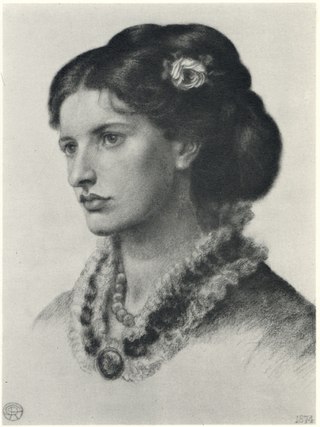
Lucy Madox Brown Rossetti was a British artist, author, and model associated with the Pre-Raphaelites. She was married to the writer and art critic William Michael Rossetti.

Ligeia Siren is a chalk drawing by Dante Gabriel Rossetti (DGR) that was completed in 1873. The painting depicts a siren, a creature from classic Greek mythology, that also appear in tales such as Homer's Odyssey or Virgil's Georgics. The drawing is predominantly inspired from Rossetti's own 1869 libretto The Doom of the Sirens with which Ligeia is one of the female leads. Instead of depicting the traditional encounter of the siren with her victims entranced by her beauty and powers of music, doomed to a terrible fate, as in The Siren (1900) by John William Waterhouse or Ulysses and the Sirens (1909) by Herbert James Draper. Rossetti depicts a timeless moment, where contrary to his depiction of her in his libretto, she appears tranquil and relatively innocuous to her intended victims in the background.